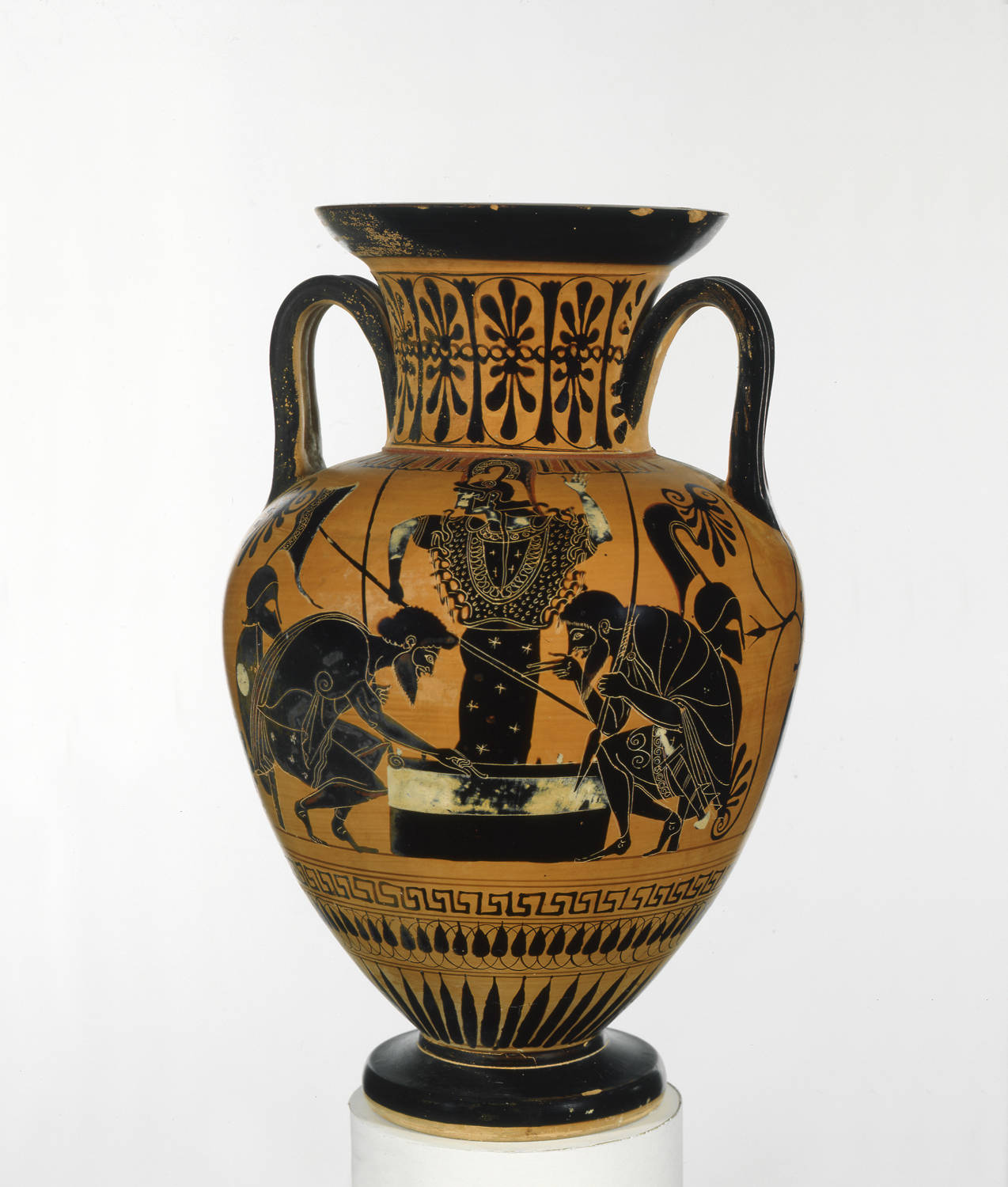
- Type: Classroom Activity
- Collection: Ancient Art
- Culture/Region: Greece
- Subject Area: History and Social Science, Visual Arts
- Grade Level: K-5
Object Information
The ancient Greeks were masters of painted pottery. This vase was made in Attica, the area including and surrounding the city of Athens. Athenian pottery is known for its distinctive clay, which is rich in iron oxides that turn a deep red when fired. The vase is painted in the black-figure technique, which originated in the city of Corinth (west of Athens) around 700 BC, but which Athenian artists began to use beginning about 600 BC. The large size of Attic vases gave Athenian painters more room to develop the technique and experiment with overlapping figures, the rendering of perspective, and the addition of other colors (also done in Corinth) such as the white on the game board and on Athena’s face and arms in this example. In black-figure vase painting, figures and decoration were painted with a slip (liquefied clay) that would turn black when the pot was fired in a kiln. The background, which initially retained the natural color of the clay, was then lightened by applying a weaker slip to those areas.
The shape seen here is an amphora (“carried on both sides”). The many varieties of amphorae were used to transport liquids and solids such as wine, olive oil, grapes, and olives—natural resources that the Greeks traded throughout the Mediterranean world. Usually a potter made the vessel and a painter decorated it, although sometimes one person performed both tasks.
The scene on this amphora depicts two Greek warriors, Ajax and Achilles, taking a break from the action during the Trojan War to play a board game. Athena, goddess of war, stands over them. Athena appears extremely stiff and posed, which some scholars believe is an indication that the figure is a statue. Although Achilles and Ajax are playing a game, they both seem ready to jump back into action at anytime: they are still holding their spears.
The scene represented here is not found in the Iliad, but it became a popular subject for vase painters. It is not known exactly what game they are playing; it could be one similar to chess or a game involving dice. Scenes with gods, goddesses, and heroes were extremely popular subjects for Greek vase paintings. Although we only see one side of the vase here, both sides of most vases were painted. The other side of this vase shows an older man with two warriors. It may or may not relate to the scene of Ajax and Achilles.
Concept
Students will study the culture of ancient Greece and learn about its painted pottery.
Download File